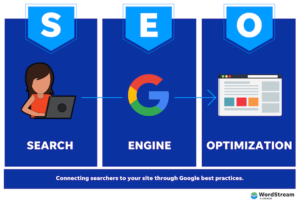An attorney (also called an attorney-at-law) is a professional who provides legal advice to clients. They also draft legal documents and negotiate deals on their client’s behalf.
Choosing the right university is important for those who want to become attorneys. The best schools for law degrees usually offer programs in the area of the law that interests students. Contact Kevin A. Adamson, P.C. now!

Becoming an attorney is a long and rigorous process. It requires a bachelor’s degree from an accredited college or university and four years of law school to prepare for the bar exam and gain experience in a private firm or with a government agency. In addition, lawyers and attorneys must complete Continuing Legal Education (CLE) classes each year to stay current on the laws and regulations of their state or jurisdiction.
While the exact requirements vary from one jurisdiction to the next, most programs require a minimum of four years of undergraduate study before starting law school. While the major is not important, most students choose a subject that will provide them with a solid foundation for studying law and preparing for the rigorous demands of legal education. Popular undergraduate majors include English, history, and political science.
After graduating from law school, many graduates intern with a private law firm or governmental agency to gain hands-on experience. Those who work at a private law firm usually perform general legal tasks, such as conducting research and drafting legal documents. Attorneys who work for the government may be assigned a particular specialty or handle cases that affect the public at large.
In addition to internships, students can also get on-the-job training by working as a legal assistant for an experienced attorney. Depending on the jurisdiction, this position may be paid or unpaid and can help you determine if you enjoy this type of work.
Some universities offer dual degree programs that allow students to earn a Juris Doctor and another degree in a subject such as international affairs, public policy or business administration. A joint JD/MBA program typically consists of four years of full-time study distributed equally between the two areas of focus. Some schools also offer a doctorate in law, known as the DSJ, which is designed for students who want to pursue individual legal research and contribute to the advancement of the field of law.
License
A license is a formal permission from a government or other governing body to do something, like conduct business or operate a vehicle. A person can also use the word in a figurative sense to describe an exception granted for a particular situation, such as James Bond’s famous “license to kill.” The phrase has many other meanings in English, but it is mainly used to denote permission from a licensor.
After completing law school and earning a Juris Doctor degree, would-be attorneys must pass the bar exam to be licensed to practice law in their jurisdiction. The bar exam is usually a comprehensive examination that covers multiple legal subjects. It requires a deep understanding of the law and how it applies to specific situations. The exam also tests a lawyer’s research, writing and analytical skills.
Once a would-be attorney has successfully passed the bar exam, they must also undergo a character evaluation or background check to become licensed. This step varies from one jurisdiction to the next and is meant to ensure that future attorneys have a strong moral character and are upstanding members of the community.
After the lawyer is deemed to have good character and fitness, they must then take an oath that certifies them to practice law. This often takes place at a formal swearing-in ceremony organized by the local bar association, law school or other group.
Those who have been licensed to practice law are also required to follow strict ethical rules and professional conduct guidelines that govern their behavior and interactions with clients. This includes maintaining client confidentiality and honoring the attorney-client privilege. Attorneys who violate these rules could lose their license to practice law or face criminal charges.
In addition to licensing, attorneys must also complete significant work experience to gain the necessary expertise to handle their cases. This may involve performing legal research and analysis, drafting and filing court documents, or representing clients in legal proceedings. Those with more experience tend to be better qualified to provide quality service and advice to their clients.
Experience
A legal career requires a set of rigorous academic qualifications and practical experience. Whether you’re entering the profession at a young age or transitioning to it later in life, there are several pathways to becoming an Attorney that align with your unique circumstances and career goals. Obtaining hands-on experience in the form of internships, clerkships, or participation in moot court competitions is critical to building a legal acumen and developing professional networks. Many jurisdictions also require or highly recommend a period of post-graduate training, known as articling, working under the supervision of an experienced Attorney prior to licensure.
Develop Strong Written and Oral Communication Skills: Effective communication is a vital skill for attorneys, as they often draft legal documents, prepare arguments, and interact with clients. It’s also essential to possess an analytical mindset and have the ability to interpret complex legal principles and statutes. Stay Up-to-Date on Legal Trends: The legal landscape is always changing, so it’s crucial to keep up-to-date on case law and statutory developments.
Additional qualifications for successful Attorneys include specialized training, networking through professional organizations, and technological proficiency, including familiarity with legal research software and databases. Moreover, it’s advisable to specialize in a niche practice area, as this can set you apart from your peers. In addition, it’s important to pass a background check and character evaluation before you can be licensed to practice.
Fees
Attorney fees are based on several factors, including the amount of work required to do the job and how specialized an attorney’s field is. For example, an attorney specializing in murder cases will probably charge more for his or her services than a criminal defense attorney who works on misdemeanor crimes. Attorneys may also charge additional costs such as court filing fees or stenographer fees to cover expenses that are associated with their representation.
Hourly rate fees are the most common fee structure. Lawyers typically bill clients by the tenth of an hour in six-minute increments and will usually have an agreement with the client that sets out the hours for which the attorney will be billed. Flat-rate fees are also a popular method of paying attorneys, particularly for legal situations that involve a lot of form filings or other tasks that can be done quickly and efficiently. Attorneys benefit from this type of arrangement because they can collect a large sum upfront and don’t have to keep track of the hours they work for each individual case.
Contingency fees are a common fee arrangement for tort cases, where the attorney’s fee is contingent on the money that is recovered for the client. Generally, these fees are only awarded if the case is successful and can range from one third to forty percent of the total compensation. Contingent fees are typically prohibited by state law for some types of cases, such as divorce and criminal prosecutions, because they can create incentives for lawyers to take on risky or unprofitable cases.
Disputes sometimes arise with regard to legal fee arrangements, and it is important for both attorneys and clients to communicate regularly about these issues. Small disputes often balloon into bigger issues if they are not addressed early on in the process. Lawyers are ethically obligated to charge reasonable fees, and it is important that the method used to calculate an attorney’s fee be taken into account when determining whether it is unreasonable. For this reason, many disciplinary proceedings and complaints involve allegations of attorneys charging excessive fees.

